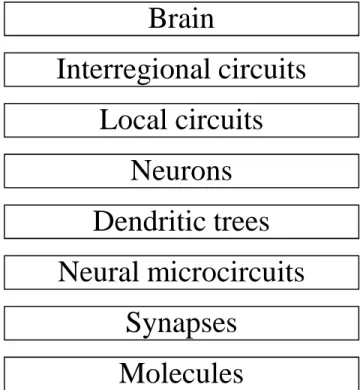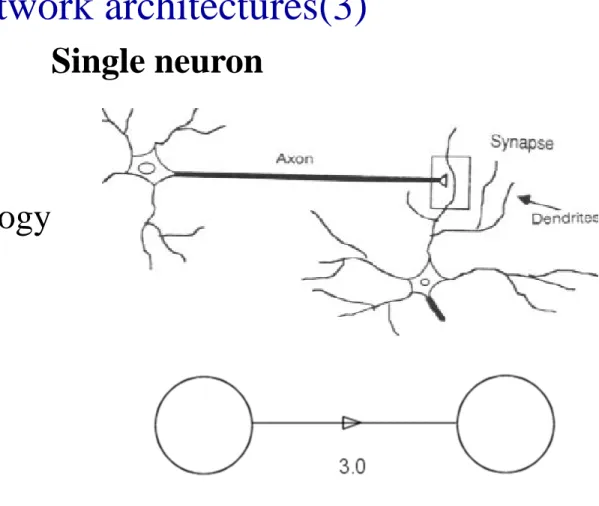11/27/2011. TÁMOP – 4.1.2-08/2/A/KMR-2009-0006 1 Development of Complex Curricula for Molecular Bionics and Infobionics Programs within a consortial* framework**
Consortium leader
PETER PAZMANY CATHOLIC UNIVERSITY
Consortium members
SEMMELWEIS UNIVERSITY, DIALOG CAMPUS PUBLISHER
The Project has been realised with the support of the European Union and has been co-financed by the European Social Fund ***
**Molekuláris bionika és Infobionika Szakok tananyagának komplex fejlesztése konzorciumi keretben
***A projekt az Európai Unió támogatásával, az Európai Szociális Alap társfinanszírozásával valósul meg.
11/27/2011. TÁMOP – 4.1.2-08/2/A/KMR-2009-0006 2
Introduction to Neural Processing
www.itk.ppke.hu
(Bevezetés a Neurális Jelfeldolgozásba)
János Levendovszky, András Oláh, Dávid Tisza, Gergely Treplán
Digitális- neurális-, és kiloprocesszoros architektúrákon alapuló jelfeldolgozás
Digital- and Neural Based Signal Processing &
Kiloprocessor Arrays
11/27/2011. TÁMOP – 4.1.2-08/2/A/KMR-2009-0006 3
Outline
• Introduction to neural processing
• Scope and motivation
• Historical overview
• Benefits of neural networks
• Neurobiological inspiration
• Human brain
• Network architectures
• Applications of neural networks
• Summary
www.itk.ppke.hu
www.itk.ppke.hu
11/27/2011. TÁMOP – 4.1.2-08/2/A/KMR-2009-0006 4
Introduction(1)
• In our days, methods of artificial intelligence (AI) are increasingly applied in the fields of information technology.
• These new approaches help us solve problems that would have remain unsolved by traditional methods, - and moreover - they usually provide results with higher efficiency.
• Looking at the well-known traditional areas, like analysis, decision support, statistics, control, etc. we can use precise, deterministic models. Statistics help us to approximate a function or to make a model.
www.itk.ppke.hu
11/27/2011. TÁMOP – 4.1.2-08/2/A/KMR-2009-0006 5
Introduction(2)
• Optimization of a simple problem can be done by linear programming.
• We also know that nonlinear or dynamic programming are the main key methods to solve harder, more complex problems.
• But on the other hand, traditional thinking fails in several cases: the problem can be so complex that we do not even know the exact function; how could we know its optimum then?!
• Prediction using time series analyzing may not give adequate results. In these cases we can e.g. use the ”soma AI-method”
that is called neural networks.
www.itk.ppke.hu
11/27/2011. TÁMOP – 4.1.2-08/2/A/KMR-2009-0006 6
Scope and motivation(1)
• Why do we need to take a closer look at the functioning of neural networks and analog processor arrays? Our motivation is to be able to create models - operating optimally under minimal error signal levels - even in barely known, highly complex IT systems. The block diagram on the next slide shows us the new computational paradigm using artificial neural networks.
11/27/2011. TÁMOP – 4.1.2-08/2/A/KMR-2009-0006 7
Scope and motivation(2)
Based on observing examples (inputs and desired outputs) how to learn the desired signal transformation?
www.itk.ppke.hu
stochastic input signal
prescribed, unknown transformation
desired output
error signal
Neural network
Optimizing the free parameters of the adaptive architecture
output signal
-
www.itk.ppke.hu
11/27/2011. TÁMOP – 4.1.2-08/2/A/KMR-2009-0006 8
Scope and motivation(3)
• Now the challenge is to design a robust, modeling architecture that can represent, learn and generalize knowledge. Hard enough - but evolution and biology provides us a more than useful pattern: the mammal nervous system has high representation capability, large scale adaptation, far reaching generalizations, and the structure is modular.
• This study focuses on soft computing approaches to solve IT problems, mimicking the brain in his computational paradigm.
www.itk.ppke.hu
11/27/2011. TÁMOP – 4.1.2-08/2/A/KMR-2009-0006 9
Scope and motivation(4)
Copying the brain?
Human Brain
Neuron biological
model
Artifical Neuron Network
(Simplification)
Engineering problem solving in the field of Information Theory (IT)
The focus of this curse
Feature extraction
Technology (e.g. VLSI) Far too complex for
engineering implementation
Human Brain
Neuron biological
model
Artifical Neuron Network
(Simplification)
Engineering problem solving in the field of Information Theory (IT)
The focus of this curse
Feature extraction
Technology (e.g. VLSI) Far too complex for
engineering implementation
Historical Notes(1)
• Linear analog filters, 20’s
• Artificial neuron model, 40’s (McCulloch-Pitts, J. von Neumann);
• Perceptron learning rule, 50’s (Rosenblatt);
• FFT, 50’s
• ADALINE, 60’s (Widrow)
• The critical review, 70’s (Minsky)
• Adaptive linear signal processing (RM, KW algorithms) , 70’s
• DSPs and digital filters, 80’s
Historical Notes(2)
• Feed forward neural nets, 80’s (Cybenko, Hornik, Stinchcombe..)
• Back propagation learning, 80’s (Sejnowsky, Grossberg)
• Hopfield net, 80’s (Hopfield, Grossberg);
• Self organizing feature map, 70’s - 80’s (Kohonen)
• CNN, 80’s-90’s (Roska, Chua)
• PCA networks, 90’s (Oja)
• Applications in IT, 90’s - 00’s
• Kiloprocessor arrays 2005
www.itk.ppke.hu
11/27/2011. TÁMOP – 4.1.2-08/2/A/KMR-2009-0006 12
Benefits of neural networks(1)
• Computing power of neural networks are based:
1. Parallel distributed structure;
2. Ability to learn (generalization);
• Use neural network as a part of a system!
• Powerful capabilities:
1. Nonlinearity: a neural networks is nonlinear in a distributed fashion;
2. Input-output mapping: neural networks uses paradigm called learning with a teacher or supervised learning based on training samples or desired response;
www.itk.ppke.hu
11/27/2011. TÁMOP – 4.1.2-08/2/A/KMR-2009-0006 13
Benefits of neural networks(2)
3. Adaptivity: Synaptic weights can be changed in the surrounding environment. Neural networks can be easily retrained when small changes appears in the environment. This synaptic weights can be changed in real time to adapt in a non stationer environment. To realize the benefits of adaptivity, the learning time of the neural network should be long enough to ignore spurious disturbances, but short enough to react important changes of the environment.
• Inspiration from neurobiology of human brain which is summarized shortly.
www.itk.ppke.hu
11/27/2011. TÁMOP – 4.1.2-08/2/A/KMR-2009-0006 14
Biological inspirations(1)
Mammal brain properties
• High representation capability;
• Large scale adaptation;
• Far reaching generalizations;
• Modular structure (nerve cells, neurons);
• Very robust system identification and modeling
www.itk.ppke.hu
11/27/2011. TÁMOP – 4.1.2-08/2/A/KMR-2009-0006 15
Biological inspirations(2)
Modeling architecture
Representation Learning Generalization Robustness Modularity
Solution provided by evolution and biology:
MAMMAL BRAIN
www.itk.ppke.hu
11/27/2011. TÁMOP – 4.1.2-08/2/A/KMR-2009-0006 16
Biological inspirations(3)
The artificial neurons we use in the course are very primitive in comparison to those found in the brain.
The primary interest in this course is to study of artificial neural networks from an engineering point of view!
The source of inspiration is the neurobiology analogy !
Hebb’s Rule:
If an input of a neuron is repeatedly and persistently causing the neuron to fire, a metabolic change happens in the synapse of that particular input to reduce its resistance
www.itk.ppke.hu
11/27/2011. TÁMOP – 4.1.2-08/2/A/KMR-2009-0006 17
Human brain(1)
Human brain as a three-stage signal processing system:
Receptors Neural
Network
Effectors
Stimulus Response
www.itk.ppke.hu
11/27/2011. TÁMOP – 4.1.2-08/2/A/KMR-2009-0006 18
Human brain(2)
The previous figure shows the block diagram representation of nervous system. The brain is a central system which is represented by the neural net. This nerve net continually receives information and makes exact decisions after processing. Two type of transmissions exists:
• Forward transmission
• Feedback
Receptors converts the stimulus into electrical signals that contain the information and it is transmitted to neural net (brain).
www.itk.ppke.hu
11/27/2011. TÁMOP – 4.1.2-08/2/A/KMR-2009-0006 19
Human brain(3)
Effectors convert electrical impulses generated by the brain (after processing) into responses as system outputs such as a movement.
The elementary processing unit of the brain is the neuron.
The processing speed of the neuron are in the range of nanosecs, while the transistors (silicon gates) performs in the microsecond range. Neurons are slower than transistors!
On the other hand the number of the interconnections between the neurons are very large: 60 trillion connections (synapses).
www.itk.ppke.hu
11/27/2011. TÁMOP – 4.1.2-08/2/A/KMR-2009-0006 20
Human brain(4)
Synapses:
• The elementary units that controls the interactions between neurons;
• Excitation or inhibition type;
• Plasticity: creation or modification of existed synapses;
• Axons: transmission lines which has smoother surface fewer branches and greater length (output)
• Dendrites: transmission lines which has an irregular surface and more branches
www.itk.ppke.hu
11/27/2011. TÁMOP – 4.1.2-08/2/A/KMR-2009-0006 21
Human brain(5)
The figure shows a neuron cell.
www.itk.ppke.hu
2011.11.27.. TÁMOP – 4.1.2-08/2/A/KMR-2009-0006 22
Human brain(6)
Action potential (spikes):
• Majority of neurons encode their outputs as a series of voltage signals.
• These pulses are generated close to the nucleus and propagates across the axon at constant amplitude and speed.
• Axons have high electrical resistance and very large capacitance.
www.itk.ppke.hu
11/27/2011. TÁMOP – 4.1.2-08/2/A/KMR-2009-0006 23
Human brain(7)
Figure shows the structural organization of levels in the brain.
Neural microcircuits
Molecules Synapses Dendritic trees
Neurons Local circuits Interregional circuits
Brain
www.itk.ppke.hu
11/27/2011. TÁMOP – 4.1.2-08/2/A/KMR-2009-0006 24
Network architectures(1)
NNs incorporate the two fundamental components of biological neural nets:
1. Neurons (nodes) 2. Synapses (weights)
www.itk.ppke.hu
11/27/2011. TÁMOP – 4.1.2-08/2/A/KMR-2009-0006 25
Network architectures(2)
Single neuron
www.itk.ppke.hu
11/27/2011. TÁMOP – 4.1.2-08/2/A/KMR-2009-0006 26
Network architectures(3)
Single neuron
Figure shows the analogy between synapse and
Weight.
www.itk.ppke.hu
11/27/2011. TÁMOP – 4.1.2-08/2/A/KMR-2009-0006 27
Network architectures(4)
Single-layer feed forward networks
• Figure shows a feed forward (or acyclic) network with a single layer of neurons.
• In the case single-layer networks
there are only one layer of neuron, which generate the output(s).
www.itk.ppke.hu
11/27/2011. TÁMOP – 4.1.2-08/2/A/KMR-2009-0006 28
Network architectures(5)
Single-layer feed forward networks
• Weight settings and topology determine the behavior of the network.
• Given a topology what is the optimal setting? How can we find the right weights?
• Single-layer neural networks use the perceptron learning rule to train the network (learning):
-Requires training set (input / desired output pairs) -Error is used to adjust weights (supervised learning) -Gradient descent on error landscape
www.itk.ppke.hu
11/27/2011. TÁMOP – 4.1.2-08/2/A/KMR-2009-0006 29
Network architectures(6)
Multi-layer feed forward networks
• Information flow is unidirectional -Data is presented to Input layer -Passed on to Hidden Layer
-Passed on to Output layer
• Information is distributed
• Information processing is parallel
www.itk.ppke.hu
11/27/2011. TÁMOP – 4.1.2-08/2/A/KMR-2009-0006 30
Network architectures(7)
Recurrent networks
• Multidirectional flow of information
• Memory / sense of time
• Complex temporal dynamics (e.g. CPGs)
• Various training methods (Hebbian, evolution)
• Often better biological models than FFFNs
www.itk.ppke.hu
11/27/2011. TÁMOP – 4.1.2-08/2/A/KMR-2009-0006 31
Network architectures(8)
Recurrent networks
• Hopfield network is a very good example of recurrent networks. Weight settings and topology determine the behavior of the network. Given a topology what is the optimal setting?
How can we find the right weights?
• Hopfield networks use the Hebb learning rule to train the network (to memorize).
www.itk.ppke.hu
11/27/2011. TÁMOP – 4.1.2-08/2/A/KMR-2009-0006 32
Applications(1)
Recognition
• Pattern recognition (e.g. face recognition in airports)
• Character recognition
• Handwriting: processing checks Data association
• Not only identify the characters that were scanned but identify when the scanner is not working properly
Optimization
• Travelling salesman problem
www.itk.ppke.hu
11/27/2011. TÁMOP – 4.1.2-08/2/A/KMR-2009-0006 33
Applications(2)
Data Conceptualization
• infer grouping relationships: e.g. extract from a database the names of those most likely to buy a particular product.
Data Filtering
• e.g. take the noise out of a telephone signal, signal smoothing Planning
• Unknown environments
• Sensor data is noisy
• Fairly new approach to planning
11/27/2011. TÁMOP – 4.1.2-08/2/A/KMR-2009-0006 34
Summary
• Fundamental issues: artificial neural networks, learning, generalization, human brain
• Collection of algorithms to solve highly complex problems in real-time (in the field of IT) by using classical methods and novel computational paradigms routed in biology.
• NN’s have simple principles, very complex behaviors ,learning capability, and highly parallel implementation possibility.
• Information is processed much more like the brain than a serial computer.
• Neural networks are used for prediction, classification, data association, data conceptualization, filtering and planning.
Next lecture: Signal processing by a single neuron

